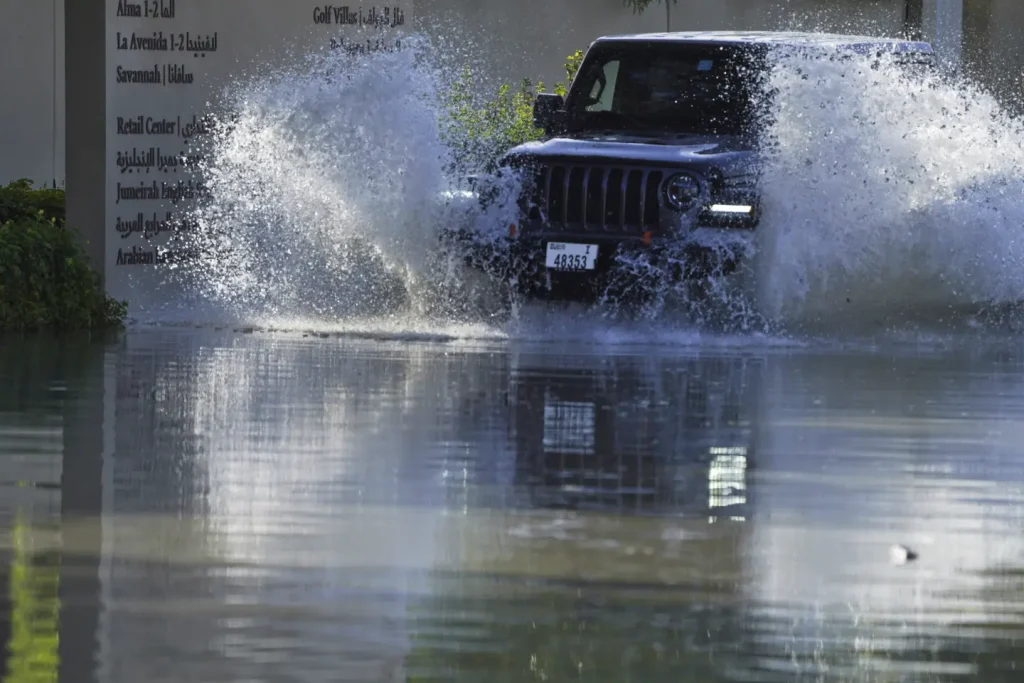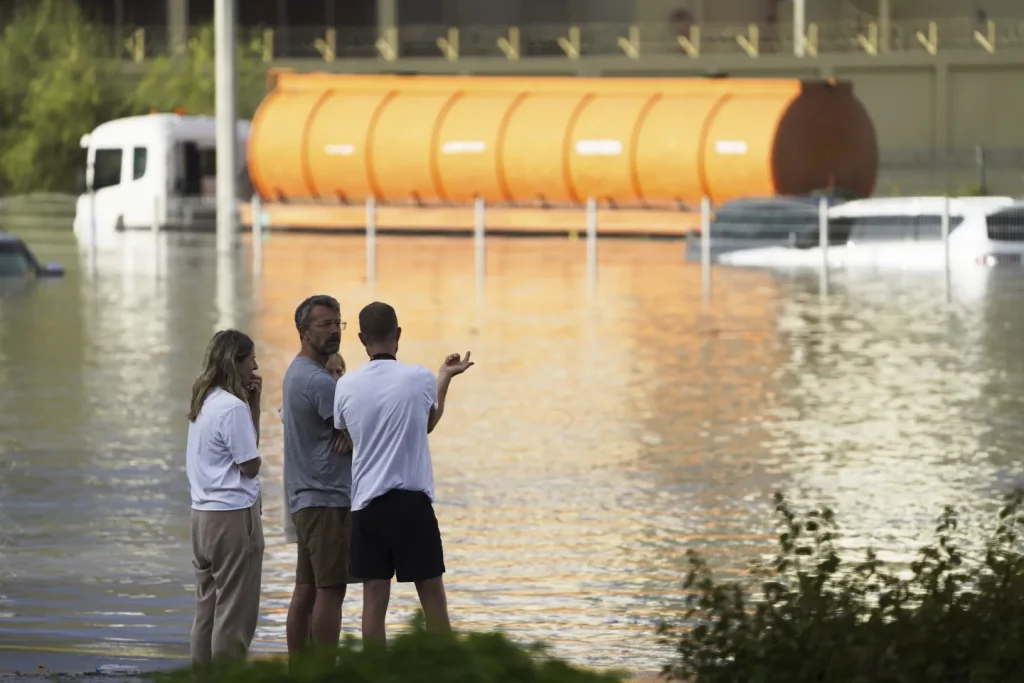The recent heavy thunderstorms that ravaged the United Arab Emirates, particularly Dubai, have left a lasting mark on the region.
The deluge of rain, described as a historic weather event by the state-run WAM news agency, has shattered records and disrupted the daily lives of residents and travelers alike.
This essay delves into the unprecedented rainfall that inundated Dubai, causing chaos and highlighting the vulnerability of even the most modern and advanced infrastructures in the face of nature’s fury.
The United Arab Emirates, a nation synonymous with arid deserts and soaring skyscrapers, is no stranger to extreme weather events.
However, the recent downpour that drenched Dubai surpassed anything witnessed since the inception of data collection in 1949.
This meteorological anomaly unfolded against the backdrop of a country that has undergone rapid transformation, evolving from a British protectorate to a global hub of commerce, tourism, and innovation.
The rains, which began on a fateful Monday night, escalated into a torrential downpour that inundated major highways and Dubai’s crown jewel, the international airport.
With over 142 millimeters of rainfall recorded within a span of 24 hours, the city found itself grappling with flooded streets, stranded passengers, and grounded flights.
Dubai International Airport, renowned as the world’s busiest for international travel, was brought to a standstill as waterlogged taxiways and roadways impeded the movement of aircraft and passengers alike.

Amidst the chaos and disruption, tales of resilience and camaraderie emerged from the floodwaters. Accounts of passengers stranded at the airport, forced to seek refuge in metro stations and terminals, underscored the challenges faced by individuals caught in the midst of a natural calamity.
The image of a couple navigating their way through floodwater with the help of a benevolent bystander, their duty-free gin bottles clinking, epitomized the spirit of survival and solidarity in the face of adversity.
As Dubai International Airport grappled with the aftermath of the deluge, transportation options were severely limited, and flight operations were significantly impacted.
The airport authorities acknowledged the magnitude of the challenges ahead, emphasizing the need for patience and understanding as they worked towards restoring normalcy.

The road to recovery, marked by logistical hurdles and operational disruptions, underscored the resilience of a city accustomed to rapid growth and transformation.
The historic rainfall in Dubai serves as a poignant reminder of nature’s unpredictability and the fragility of even the most sophisticated infrastructures in the face of extreme weather events.
As the city grapples with the aftermath of the deluge, it stands as a testament to the resilience and adaptability of its residents and authorities.
In the wake of this unprecedented event, Dubai’s spirit endures, undaunted by the challenges posed by nature’s wrath.
The recent flooding in Dubai has caused widespread disruption and damage throughout the city. Police and emergency personnel have been working tirelessly to navigate the flooded streets and assist those affected by the storm.
Lightning strikes have been a common occurrence, with the Burj Khalifa, the world’s tallest building, occasionally being touched by the bolts of electricity.
The storm has had a significant impact on the daily lives of residents in the United Arab Emirates (UAE), with schools and government offices closing in anticipation of the weather.
The country’s driverless Metro system has also been affected, with stations becoming flooded and services being disrupted.
Despite the precautions taken, some individuals have been caught in the storm, with vehicles becoming stranded in deep water and homes being flooded.
Tanker trucks have been deployed to pump away the excess water, while residents have been forced to bail out their homes.
Unfortunately, one person has lost their life as a result of the flooding. In Ras al-Khaimah, a 70-year-old man was swept away by floodwater while driving.
The hereditary rulers of the UAE have not provided any information on the extent of the damage or injuries sustained during the storm.

The UAE is known for its arid climate, with rain being a rare occurrence. The lack of regular rainfall has resulted in many roads and areas lacking adequate drainage, leading to flooding during periods of heavy rain.
The recent storm has also affected neighboring countries, with Bahrain, Qatar, and Saudi Arabia experiencing rainfall as well.
In Oman, heavy rains have caused significant damage and loss of life. At least 18 people have been killed, including 10 schoolchildren who were swept away in a vehicle with an adult. Rulers from across the region have expressed their condolences to the country.
As the UAE continues to deal with the aftermath of the storm, schools and government offices have been closed again for Wednesday.
The impact of the flooding is a reminder of the importance of preparedness and infrastructure in the face of extreme weather events.

